Review: Folklore
Folklore
Also published in Fórum UOL Jogos
Release Date: October 09, 2007
Developer: SCEJ
Publisher: SCEJ
Genre: RPG
Plataform: PlayStation 3
Folklore story is set in modern times, in the remote village of Doolin. A seaside village which lies on the West Coast of Ireland. Over time, Doolin became a village isolated from the rest of the World. Their routes to the village began to be ruined and even the fishermen who go close to there avoid the village. But there isn´t the difficulty of access to the local that causes everyone to be far away. Rumors indicate and, according to the Folklore of the village, like it or not, there you can end at any time communicating with death.
Welcome to Doolin
In Folklore you spend much of your time unraveling the mysteries that have happened and still happen in Doolin, and then gain access to any of the portals to the Netherworld. Usually you explore the village by day, going out for clues and “Mementos” of people who have died, and then at night when you have collected all the necessary data, you can offer these found objects, so they can open up access to the Kingdoms of the other World.
In short, the game starts to change his focus a bit while you’re in the village of Doolin. It would be a mix of Adventure with RPG. What I think made the game even more interesting, because many of the discoveries you will have about what happened 17 years ago in Doolin, are made through conversations with some of the residents who still live in the village, and through objects you find, notes, pictures etc. Despite residents avoid talking much about everything that happened, there are moments in the game that they end up being “forced” to reveal some things, and so parts of this whole “puzzle” in that village are beginning to be understood. The script becomes increasingly complex and intriguing.
In the beginning of the game, two strangers are mysterious called by someone, who told them to meet her in the Village of Doolin, where they say that the living can meet the dead. One of them is Ellen. A young girl student, who goes to Doolin believing that her mother, allegedly killed 17 years ago, could be there waiting for her. The other is Keats, a reporter of one occult magazine who gets a call on his agency, with a distress call about a possible murder involving fairies. So he decided to go to Doolin to investigate this crime and write a new story for your supernatural magazine.
They soon realize that the answers to what they seek are lost within each Kingdom of the Underworld, where spirits and creatures are waiting for them. Beings who act in their own ways.
Starting a New Chapter
Once the game starts you have the option of selecting between one of two characters. Each one has different perspectives on everything, which will directly influence in the game story. In addition to different goals, each following its principles and objectives.
The game is divided into chapters. In each chapter finished, you have the option to play with the another character, so go for switching between them and joining the story by two viewpoints: Ellen and Keats. However, you can also play with only one of them until a certain part of the game that keeps you from moving forward if you don´t complete all other outstanding chapters with the another character.
The game script unfolds slowly and becomes more interesting when you go seeing all sides of the events. For example, while Ellen may be going after something in the village of Doolin, Keats may be in the same time elsewhere in the village, and end up seeing something that you would never know if just playing with Ellen. Se what would be vague to you in the history, could be better explained when you were playing later the same chapter with Keats – or vice versa – that fit like a glove in the “hole” that is left in the game’s storyline.
While it is interesting that you observe all different angles, on the other hand this double play by history can become a bit tiring at times, because the characters end up needing to go through the same Kingdoms, after discovering the memories of some people who have gone forever. But as each one has a different idea about death, what they end up seeing these Kingdoms also become a little different. But that I’ll explain a little bit later here on this review.
Messengers of the Dead
In the game you embody the role of Messenger of the Netherworld. The Messengers are those people who has the lead role of take certain messages that the spirits of another World want to come to certain people in the Real World.
Ellen ends early in the game becoming the new Messenger of the Dead, and thus having the “permission” to travel between the Kingdoms of the other World. But while there is a new Messenger, also arises a new Guardian. And it turns out that Keats gains this role of Guardian, may also have access to another World.
For that they can open a portal to another dimension where the Kingdoms are, they need to get objects – known as Mementos – or memories of people who have gone, and then immediately offer in something like a ritual. So they listen to the voices of spirits that tell them somewhere to go. Arriving at this point, the portal to that Realm where the spirit is stunned, be open to the Messenger of the Dead and his Guardian.
Main Characters
Ellen is a 22 years old student who lost her parents when she was a child. Growing up she went through various institutions, orphanages etc. She has no memories of her childhood and can only vaguely remember a few things that her mother told her as a child. Since then she has always carried an emptiness and fear in your heart, and because of that she never trust the people enough. But one day Ellen received a letter that was signed with the name of her mother. Rising a little hope in her heart, Ellen decided to go to Doolin with the intent to understand all this.
Keats, a boy of 27 years of age, is a reporter for the third most popular magazine of supernatural phenomena. The Magazine Unknown Realms. Unlike others he doesn´t believe in supernatural, so in their stories he always tries to reveal the scientific side of the claims considered paranormal. At the end of one of his business day of work, Keats receives a phone call at his agency, in which a desperate woman asks for help, saying that fairies are trying to kill her in Doolin. Wanting a new material for his magazine and curious about what is happening, he decided to go to the Village of Doolin where there are reports that people can meet the dead.
Secondary Characters
Dr. Lester: Doctor of the Village of Doolin. He’s isolated from all others when he feels guilty for the death of some people 17 years ago. Some think he may have committed child abuse, while others defend him by saying he is a man with a Gold Heart.
Suzette: Daughter of Regine and Renaldo, is the only one of the family that is still alive. Suzette is the first person who finds Keats and Ellen in the Village. She doesn´t seem to rely too much on others. She also avoids talking about her past, that somehow is mysterious even to her.
Harriet: She worked as an actress when she was young, until she suffered an accident that required to use a wheelchair now. When she was unable to walk, she began studies of hidden things. She researched on beliefs and although not fully believe in them, she still thinks that all these aren´t just stories.
O’Connel: He’s in the village recently looking for a girl which disappear a week ago. As she was studying things about Folklore, he believes she may have gone to the Village of Doolin.
Belgae: An invisible Man, Halflive – which can travel between Real World and Netherworld – It is he who teaches Keats to get access to the Netherworld for the first time, acting like Keats’s mentor for his journey. He have much knowledge about institutions and their way of speaking is very intellectual.
Fairy Lord: The King of the Faery Realm, who is trying to convince Ellen to stand on his side, making her a messenger in order to make way among all the other Kingdoms until the Netherworld Core, and thus “correct” what he thinks is wrong in the Netherworld.
Livane: Livane is hated by the King of the Fairies, for he says that she started a rebellion in the Netherworld, when she went to Netherworld Core and disabled a vital function of the Realm. Thus, provoking a war between her and the Faery Realm.
Scarecrow: A scarecrow Halflive – half alive, half dead – it is him who tells Ellen for the first time about the Netherworld, a place where you can meet the dead. He has a funny way of talking, and have a strange feeling that there are some things about the Worlds which prevents him from fully trust at all.
The World of the Dead
The Village of Doolin hides portals that provide access to various Realms of the World of the Dead, also known as The Netherworld. Realms created by the perception of humans of how life would be like after death.
They are spirits who live in these Kingdoms, creatures, fairies and monsters who are called “Folks”. Folks have all these forms of attack and to defend itself, that shouldn´t be underestimated. Each Folk has powerful souls who are known as their ID’s, and that can be captured and collected by travelers from the Netherworld, they being the Messengers and Guardians. So, right then can use the ID’s captured by their own need.
The combat portion of the game is set in the Netherworld, while the operation was left to the Village of Doolin.
In Netherworld there are 7 distinct realms, with different characteristics and different Folks inhabiting them. In total you can find over 100 different Folks, needing to make the perfect combat strategy to defend itself, defeat and capture them.
For years and years of our lives, the man has accumulated a number of concepts about how life would be like after death. At the time that these concepts are so strong and constant, they end up materializing in the form of a new Realm in the Netherworld. Sometimes being a place as beautiful as Faery Realm, or so aggresive in a state of war, as Warcadia.
Folks
The Folks are inhabitants of the Netherworld. They are spirits of the dead who take a new shape in this new world of life after death. The way they died in the Real World interferes directly in these creatures they became. If a person commits suicide or was brutally murdered, she ends up materializing in a disturbing way in Netheworld, in which case, would be the Folks.
Interpreting the Death
Each person interprets life after death in a different way. Ellen and Keats didn´t difer from others in this respect. During the game you realize that the knowledge that each has upon as would be the Netherworld, directly affect the way they see the World and what they will find there.
What Keats find in every Realm where he passes, not to say that Ellen will find exactly the same. The Folks that are present there are different for each character, based on how they interpret the world. That is, in the same Realm, Ellen capture the ID’s of some Folks, that Keats can’t capture in the same Realm, and vice versa. Thus further increasing the vast “library” of Folks who have in the game, and also be very tiring preventing the passage of the character by the same temple that you just go with the previous character. Because you just need to use different strategies, which provides that new Folk to destroy others who are ahead, and finally, the Folklore that makes the “disorder” in that Realm.
As Ellen uses more tactics and strategies with the ID’s captured, Keats often use more brute force attack, thus varying forms of combat.
The 7 Realms of Netherworld
There are seven different Realms in Netherworld, which are just like humans think that is life after death. Below I’ll show you what they are and talk a little about some of the creatures who is living there.
Faery Realm
Built in a fantastic scenery and mystical, Faery Realm is the direct manifestation of the traditional view of men on the Paradise after death. Thus expressing the fear that people have of death, making the Realm a comfort. Cait Sidhe is one of the folks inhabitants of Faery Realm. He appears in the human world in the form of a Black Cat. He can speak the language of humans, but does so only on rare occasions. In Netherworld, the way he defends himself is using a kind of loose powder it, to confound his enemies.
Warcadia
The Realm of Warcadia is exactly our current world, experienced by the Dead. It is the idea of the afterlife and then in front, with the same aspects of the ignorant human being. A universe where the war is still prevalent. The two fields of Warcadia are trapped in an eternal fight, but not even folks remember why. Brummbear is one of the folks living in Warcadia. He is a officer man who loves commanding the moment of attack. He is usually watching the battle from afar, but even so it is no longer one of the strongest, if you need to get into the fight as well.
Undersea City
The city under the sea was once inhabited by various Gods created by the human race itself. Today, many of them began to lose his life, caused by the fact of lack of human belief in them. In Undersea City there is a swamp where some of the dead enter it, their memories will be forgotten forever, both for those who are still alive, as if to himself. Malabaricus is an inhabitant folk of the Undersea City. When he feels threatened, he released several smaller fish that are stored inside your mouth, and uses them as an attack to defend themselves.
Endless Corridor
The Endless Corridor is the kind of place where people who have lost faith about life after death, will stop. It is a world of puzzles. A labyrinth without input or output. He represents the modern day people who don’t understand death. Endless Corridor is also said by the fairies, which is the Kingdom of Livan. Habetrot is an inhabitant folk of Endless Corridor. The key to this whole puzzle is upon him. He controls the rhythm in time he wants. To defend himself, he unleashes a wave that hypnotizes enemies.
Hellrealm
Death being where your sins are judged in the Hellrealm there is a court and a judge. Fachan is an inhabitant folk of the Hellrealm. He hates humans and don’t want to let them remain there. Fachan acts with more force, but is not very smart.
Doolin
As I am avoiding any kind of spoiller, I’d rather not mention details about this part. Agapanthus is a very curious folk who seeks wisdom. When intruders appear, he tries to meet them, but then destroy them, following a process that he does.
Netherworld Core
The Realm of Netherworld Core was born at exactly the time that humans first understand death. The King of the Fairies aims to reach this Kingdom to fix something he says Livane chipped. A vital function. Coropuna is an inhabitant folk of the Realm Netherworld Core. He has incredible strength in his legs, but it generates a lot of effort into his head, that’s why he has that rock on his head, which serves to dissipate the effort.
Rules of Combat
In Folklore your main goal in battle is not to kill your enemies. Indeed, what more should be done is to capture their souls. However, in some cases, to evolve the “level” of his folks caught, you need to kill some of them, without capturing their ID’s.
Each type of Folk is identified with a different ID, which would be their souls. Capturing their ID’s, you gain the ability to use them in the coming battles in the best way possible.
Overall, combat is divided into several steps, which they are: the battle, the absorption of ID, the selection of the access button that Folk will be available in your control, and the invocation of the Folk in the battle.
Fighting techniques
During battles, you will have the option to fight or just flee the enemy folks. If you decide to fight – which would be more consistent, since this just benefits – you will attack using the Folks you’ve already captured. Early in the game, in the first Realm has a cutscene that shows the characters getting their first two ID’s of Folks. One that serves to attack, and one for defense.
- Attack: You invoke your folks caught in order to combat the other. There are several types of attacks. From what you have to be close to the enemy, even those you can attack from afar and even hit several enemies at once. The Folks have different elements. You using the right combination, the effect upon the enemy Folk generated can be much larger. As well, you might happen to use some folk who don’t have any effect upon your enemy. You acknowledge that everything is going well if your enemy when you attack him, his soul flashing in blue, with every blow received. In the pages of the book that you get in every Realm of the game, you can see tips on how to combat the enemy folks. And especially, and most importantly, the main Folklore what’s in each of the Realms of the game.
- Defense: When an enemy attacks you, you can use the skills of some of the defense Folks you have already captured, such as folk first defense of the game, which when invoked, appears in front of you and defend you from attacks of other enemies folks. But you can also do something else to try to defend themselves. Pressing the R2 button control, you make a kind of “dash” in the case it would be a quick leap that gives character to the sides. So you can try to divert the attacks of enemies, becoming a very useful technique, especially when you’re surrounded by several of them.
- Fleeing from enemies: You don’t need to fight all Folks you meet along the way. If you want you also have the option to flee the area, to escape enemies. But keep in mind that if you avoid the fighting, you don’t end up absorbing the soul of any of these folks enemies, preventing the evolution of ID’s already captured. Because, on the run from various folks, you may end up failing to capture some of that may be essential in some moments of the game. Not only just in combat but also to open paths by Realms. Since there are “Memory Stones” which sometimes contains important point or block the path of the game. These “Memory Stones” are only destroyed in accordance with the color of the element that your captured folk has.
ID Absorption
If you hit enemies with the folks valid attacks, their soul will begin to jump out of their bodies in blue color. Insisting in the attacks, will have a moment that their soul will be red and that is when we take the ID of them by pressing the R1 button on the SIXAXIS.
During the game, you notice some variations of how to absorb the ID of the enemies. And these variations occur according to movements made directly by the SIXAXIS. As it happens the moment of absorption of the soul, you can press the R3 button control and view tips on how to do that such absorption.
While the absorption takes place, appears a menu bar at the bottom of the screen, showing how you’ve managed to complete the capture of Folk. If you finish all grafts that bar, the soul is captured successfully. There are 6 ways to absorb, that they are: Shot Timing, Beat, Balance, and Mix Stop & Go.
- Shot: Absorbs enemy’s ID just pulling up the control in the moment his soul is already red.
- Timing: Absorb the ID of the enemy, pulling the control up, every time, at the right moment in which the soul turns red, to fill the bar absorption.
- Beat: Absorbs the ID of the enemy, swinging control to the left and right, beating the folk on the ground, until he was weak.
- Balance: Absorbs the ID of the enemy, directing his soul to the center of the screen. While the ID goes to the right, move it to the left slightly, to make it positioned in the center, and do the same if it went the other way.
- Stop & Go: Absorbs enemy’s ID, shaking the controller rapidly up and down. When the ID becomes cloudy, do not move your control, only returning to shake it when she comes back color.
- Mix: Absorbs the ID of the enemy, with a combination of all previous actions, and ultimately, with the shot.
Folklores
In each Realm of Netherworld there is a different Folklore. The stronger spirit of the Realm. Winning each of them, you bring back some order to that Realm and you can discover memories of people who have gone before. Even capturing the soul of a Folklore, you can’t use your ID later. He does not appear in your list of Folk.
In general, Folklore still managed to bring soon to the library of PlayStation, a RPG with traces of adventure and exploration, in a way that no player had expected. This is one of those classics that you love or hate. And, of course, for me it is on the shelf of the games I love.
* For this review, besides my own interpretation of the game, I used to research coming from sites like Gamespot, IGN, Folklore U.S. and the game manual.
My Personal Score: 4/5
– Matheus Pitillo
acompanhe esse texto em português
A história de Folklore se passa em tempos modernos, na remota Vila de Doolin. Uma Vila a beira mar que fica na costa Oeste da Irlanda. Com o tempo, Doolin passou a ser uma Vila isolada do resto do Mundo. Suas rotas até a vila começaram a ficar arruinadas e até mesmo os pescadores que passam por ali perto evitam chegar até a Vila. Mas não é a dificuldade de acesso ao local que faz com que todos fiquem longe dali. Rumores indicam e de acordo com os folclores da vila, querendo ou não, ali você pode acabar a qualquer momento se comunicando com a morte.
Bem Vindo à Doolin
Em Folklore você passa boa parte do tempo desvendendo os mistérios que aconteceram e que ainda acontecem em Doolin, para depois conseguir acesso a algum dos portais para o Netherworld. Geralmente você explora a Vila de dia, indo atrás de pistas e “Mementos” das pessoas que já morreram, para depois de noite quando você já tiver juntado todos os dados nescessários, você possa oferecer esses objetos encontrados, para assim poder abrir o acesso aos Reinos do outro Mundo.
Resumindo, o jogo passa a mudar um pouco o foco dele enquanto você está na Vila de Doolin. Seria uma mistura de Adventure de exploração, com RPG, o que na minha opinião acabou deixando o jogo ainda mais interessante, já que boa parte das descobertas que você vai tendo sobre o que aconteceu a 17 anos atrás em Doolin, são feitas através de conversas com alguns dos moradores que ainda vivem na vila e, através de objetos que você descobre, anotações, retratos etc. Apesar dos moradores evitarem falar muita coisa a respeito de tudo que aconteceu, há momentos no game que eles acabam sendo “obrigados” a revelar algumas coisas e, assim, as peças de todo esse “quebra cabeça” sobre essa Vila começam a ser entendidos. O enredo fica cada vez mais complexo e intrigante.
No início do jogo, duas pessoas desconhecidas são chamadas misteriosamente por alguém que lhe diziam para encontrá-la na Vila de Doolin, onde dizem que os vivos podem se encontrar com os mortos. Uma delas é Ellen. Uma jovem garota estudante que vai até Doolin por acreditar que sua mãe, supostamente morta ha 17 anos, poderia estar ali lhe esperando. O outro é Keats, um repórter de uma revista de ocultismo que recebe uma ligação em sua agência com um pedido de socorro, sobre um possível assassinato envolvendo fadas. Então o mesmo decidi ir até Doolin para investigar esse crime e escrever uma nova materia para a sua revista sobrenatural.
Eles logo percebem que as respostas para o que eles procuram estão perdidas dentro de cada Reinos do Mundo dos Mortos, onde espíritos e criaturas estão esperando por eles. Seres que agem por seus próprios modos.
O início de cada capítulo
Assim que o jogo começa você tem a opção de selecionar entre um dos dois personagens. Cada um deles possui perspectivas diferentes em relação a tudo, o que vai influenciando diretamente na história. Além de objetivos diferenciados, cada um deles seguem seus princípios e metas.
O jogo é dividido por capítulos. A cada capítulo terminado você tem a opção de jogar com o outro personagem, para assim ir alternando entre eles e juntando a história pelos dois pontos de vista. Porém, você também pode jogar com só um deles, até uma certa parte do jogo, que te impede de seguir em frente caso você não complete todos os outros capítulos pendentes com o outro personagem.
O enredo do jogo vai se revelando pouco a pouco e se torna cada vez mais interessante quando você vai enxergando de todos os lados os acontecimentos. Por exemplo, enquanto Ellen pode estar indo atrás de alguma coisa na Vila de Doolin, Keats pode estar nesse mesmo momento em outro lugar da Vila e acabar presenciando algo, que você nem ficaria sabendo se tivesse jogando apenas com a Ellen. Então o que ficaria vago para você na história, poderia ser mais bem explicado quando você estivesse jogando depois o mesmo capítulo com Keats. Que encaixaria como uma luva no “burraco” que sobraria no enredo do game.
Ao mesmo tempo que seja interessante você observar tudo em dois ângulos diferentes, por outro lado essa dupla jogada pela história pode se tornar algo um pouco maçante em alguns momentos, pois os personagens acabam precisando passar pelos mesmos reinos, atrás de descobrir as lembranças de algumas pessoas que já se foram dessa pra melhor. Mas como cada um tem uma idéia diferente sobre a morte, o que eles acabam presenciando nesses reinos também se tornam um pouco diferente. Mas isso irei explicar um pouco mais pra frente aqui na análise.
Mensageiro dos Mortos
No jogo você encarna o papel de Mensageiro do Netherworld. Os Mensageiros são aquelas pessoas que possuem o papel de levar certas mensagens que os espíritos do outro Mundo querem que cheguem a certas pessoas no Mundo real.
Ellen acaba se tornando logo no começo do jogo a nova Mensageira dos Mortos, tendo assim a “autorização” para viajar entre os Reinos do outro Mundo. Mas ao mesmo tempo que surge um novo Mensageiro, também abre espaço para um novo Guardião. E acaba que Keats ganha esse papel de guardião, podendo também ter acesso ao outro Mundo.
Para que eles consigam abrir um portal para a outra dimensão em que estão os Reinos, eles precisam conseguir objetos – conhecidos como Mementos – ou lembranças das pessoas que já se foram e, logo em seguida oferecer numa “espécie” de ritual. Assim eles escutam vozes dos espíritos que lhe indicam algum lugar. Chegando nesse lugar o portal para aquele Reino onde o espírito atordoado se encontra estará aberto para a Mensageira e o Guardião.
Personagens Principais
Ellen é uma estudante de 22 anos de idade que perdeu seus pais quando ainda era criança. Durante seu crescimento ela passou por diversas instituições, orfanatos etc. Ela não tem memórias de sua infância e só consegue se lembrar vagamente de algumas coisas que sua mãe lhe dizia quando ainda era criança. Sempre carregou desde então um vazio e medo em seu coração e, por conta disso, nunca confiava o bastante nas pessoas. Porém, um dia Ellen recebeu uma carta que estava assinada com o nome de sua mãe. Nascendo um pouco de esperança em seu coração, Ellen decidi partir para Doolin com a intenção de entender tudo isso.
Keats, um rapaz de 27 anos de idade, é repórter da terceira revista mais famosa sobre fenômenos sobrenaturais. A Magazine Unknown Realms. Diferente de outros ele não acredita em fenômenos sobrenaturais, então em suas matérias ele sempre tenta revelar o lado científico das causas consideradas paranormais. No final do expediente de um dos seus dias de trabalho, Keats recebe um telefonema em sua agência, em que uma mulher desesperada pede por ajuda, dizendo que fadas estão tentando matá-la em Doolin. Querendo uma nova matéria para sua revista e curioso com o que está acontecendo, ele decidi ir até a Vila de Doolin onde há relatos de que as pessoas podem se encontrar com os mortos.
Personagens Secundários
Dr. Lester:Doutor da Vila de Doolin. Ele se isola de todos os outros quando se sente culpado pela morte de algumas pessoas ha 17 anos atrás. Alguns acham que ele possa ter cometido pedofilia, enquanto outros o defendem dizendo que ele é um homem com coração de ouro.
Suzette: Filha de Regine e Renaldo, é a única da família que ainda está viva. Suzette é a primeira pessoa que Keats e Ellen encontram na Vila de Doolin. Ela não parece confiar muito nas outras pessoas. E também evita falar sobre o seu passado, que de certa forma, é misterioso até para ela.
Harriet: Harriet trabalhava como atriz quando ainda era jovem, até que sofreu um acidente que a fez precisar usar cadeira de rodas. Quando ficou impossibilitada de andar, ela começou a fazer estudos sobre coisas ocultas. Pesquisou sobre crenças e apesar de não acreditar totalmente nelas, ela ainda assim acha que tudo isso não são apenas histórias.
O’Connell: O’Connell está na vila recentemente a procura de uma garota que ele diz que sumiu ha uma semana. Como ela estava estudando coisas sobre Folclores, ele acredita que ela possa ter ido até a Vila de Doolin.
Belgae: Um homem invisível, Halflive – pode viajar ao Mundo Real e ao Netherworld – É ele quem ensina Keats a conseguir ter acesso ao Netherworld pela primeira vez, agindo como se fosse o mentor de Keats por sua jornada. Possui muito conhecimento sobre instituições e sua forma de falar é muito intelectual.
Fairy Lord: O Rei do Reino das Fadas, é quem tenta convencer Ellen a ficar de seu lado, tornando-a uma mensageira para poder abrir passagem entre todos os outros Reinos até chegar no Netherworld Core e, assim “corrigir” o que ele acha que está errado no Mundo dos Mortos.
Livane: Livane é odiada pelo Rei das Fadas, pois ele diz que ela começou uma rebelião em Netherworld, quando foi até Netherworld Core e desativou uma função vital daquele reino. Provocando assim uma Guerra entre ela e o Reino das fadas.
Scarecrow: Um espantalho Halflive – metade vivo, metade morto – É ele quem conta para Ellen pela primeira vez sobre o Netherworld; um lugar onde você pode se encontrar com os mortos. Ele possui uma forma engraçada de falar. E tem uma sensação estranha de que há algumas coisas sobre os Mundos que o impede de confiar totalmente em tudo.
O Mundo dos Mortos
A Vila de Doolin esconde portais que dão acesso aos vários Reinos de Netherworld. Reinos criados pela percepção dos humanos, de como seria a vida após a morte.
São nesses Reinos que habitam espíritos, criaturas, fadas e monstros que são chamados de “Folks”. Todos esses Folks possuem formas de atacar e de se defender, que não devem ser subestimadas. Cada Folk possui almas poderosas que são conhecidas como seus ID´s e que podem ser capturadas e colecionadas pelos Viajantes do Netherworld, sendo eles os Mensageiros e Guardiões. Assim, logo em seguida, podendo usar os ID´s capturados por sua própria nescessidade.
A parte de Combate do jogo se passa em Netherworld, enquanto a parte de exploração fica por conta da Vila de Doolin.
No Mundo de Netherworld existem 7 reinos distintos, com características diferentes e com diferentes Folks habitando-os. No total você pode encontrar mais de 100 Folks distintos. Precisando fazer da sua estratégia o combate perfeito para se defender, vencer e capturá-los.
Durante anos e anos de nossas vidas, o homem acumulou vários conceitos sobre como seria a vida após a morte. No momento que esses conceitos passam a ser tão fortes e constantes, eles acabam se materializando em forma de um novo Reino em Netherworld. As vezes sendo uma lugar tão bonito como o Reino das Fadas, ou tão agressivo, em estado de Guerra, como Warcadia.
Folks
Os Folks são habitantes do Mundo dos Mortos, Netherworld. Eles são espíritos da morte que tomam uma nova forma nesse novo Mundo de vida após a morte. A forma que eles morreram no Mundo Real interfere diretamente nessas criaturas que eles se tornaram. Caso uma pessoa comete suicídio ou foi brutalmente assassinada, ela acaba se materializando em uma forma perturbadora em Netheworld, que no caso, seriam os Folks.
Interpretando a Morte
Cada pessoa interpreta a vida após a morte de uma maneira diferente. Ellen e Keats não se diferenciam dos outros nesse aspecto. Durante o game você percebe que o conhecimento que cada um tem em cima de como seria o Netherworld, afeta diretamente na forma que eles verão aquele Mundo e no que encontrarão ali.
O que Keats encontrará em cada Reino por onde ele passar, não quer dizer que Ellen encontrará exatamente igual. Os Folks que estarão ali presentes se diferenciam para cada personagem, baseando-se na forma que eles interpretam esse Mundo. Ou seja, em um mesmo Reino, Ellen capturará os ID´s de alguns Folks, que Keats não poderá capturar no mesmo Reino e vice versa. Assim aumentando mais ainda a vasta “biblioteca” de Folks que tem no jogo, e também impedindo que fique muito cansativo a passagem do personagem pelo mesmo templo que você acabou de passar com o personagem anterior. Porque acaba que você precisa usar estratégias diferentes, que aquele novo Folk oferece, para destruir os outros que estão pela frente, e por último, o Folklore que faz a “desordem” naquele Reino.
Enquanto Ellen usa mais táticas e estratégias com os ID´s capturados, Keats costuma usar mais da força bruta de ataque, variando assim as formas de combate.
Os 7 Reinos do Netherworld
Existem sete reinos diferentes no Netherworld, que são exatamente como os humanos imaginam que seja a vida após a morte. Abaixo segue uma pequena descrição sobre cada um desses reinos e sobre os seres que os habitam.
Faery Realm
Construido em um cenário fantástico e místico, o Reino das Fadas é a manifestação direta da visão tradicional dos homens sobre o Paraíso, depois da morte. Expressando assim o medo que as pessoas tem da morte, fazendo do Reino um reconforto. Cait Sidhe é um dos folks habitantes do Faery Realm. Ele aparece no Mundo dos humanos na forma de um gato preto. Ele pode falar a língua dos humanos, mas faz isso apenas em ocasiões raras. Em Netherworld, a forma que ele se defende é usando uma espécie de pó que ele solta, para confundir os seus inimigos.
Warcadia
O Reino de Warcadia é exatamente o mundo nosso atual, vivenciado pelos Mortos. É a idéia da pós vida sendo seguida em frente, com os mesmos aspectos ignorantes do ser humano. Um universo onde a Guerra continua prevalecendo. Os dois campos de Warcadia estão presos em um combate eterno, mas nem ao menos eles, os folks, se lembram o porque disso. Brummbear é um dos folks habitantes de Warcadia. Ele é um senhor oficial que adora comandar o momento de ataque. Ele geralmente fica de longe observando as batalhas, mas nem por isso ele deixa de ser um dos mais fortes, caso precise entrar em luta também.
Undersea City
A cidade debaixo do mar já foi um dia habitada por vários tipos de Deuses criados pela própria raça humana. Nos dias de hoje, vários delas começaram a perder as sua existência, causado pelo fato da falta de crença dos humanos neles. Em Undersea City existe um pantano, em que se algum dos mortos entrarem nele, suas lembranças serão esquecidas para sempre. Tanto para os que ainda estão vivos, como para si mesmo. Malabaricus é um folk habitante do Reino da cidade debaixo do mar. Quando ele se sente ameaçado, ele solta vários peixes menores que estão guardados dentro de sua boca, e os usa como ataque para se defender.
Endless Corridor
O Reino Endless Corridor é o tipo de lugar em que as pessoas que perderam a fé sobre a vida após a morte, vão parar. É um mundo de quebra cabeças. Um verdadeiro labirinto sem entrada ou saída. Ele representa os dias modernos das pessoas que não entendem a morte. Endless Corridor também é dito pelas fadas, que seja o Reino de Livane. Habetrot é um folk habitante de Endless Corridor. A chave de todo esse quebra cabeça do Reino está em cima dele. Ele controla o tempo no rítimo que ele quiser. Para se defender, ele solta uma onda que hipnotiza os inimigos.
Hellrealm
A morte estando onde seus pecados são julgados, no reino do inferno existe um tribunal e um juiz. Fachan é um folk habitante do Reino dos Infernos. Ele detesta os humanos e não quer deixá-los continuar ali. Fachan age mais com a força, porém não é muito inteligente.
Doolin
Como eu estou evitando falar algum spoiller sobre o game, prefiro não citar detalhes sobre essa parte. Agapanthus é um folk muito curioso que busca a sabedoria. Quando instrusos aparecem, ele tenta conhêce-los, mas logo em seguida destruí-los, seguindo todo um processo que ele faz.
Netherworld Core
O Reino de Netherworld Core nasceu exatamente no momento que os humanos entenderam pela primeira vez a morte. O Rei das Fadas tem como objetivo chegar até esse Reino para consertar algo que ele diz que Livane estragou. Uma função vital. Coropuna é um folk habitante do Reino de Netherworld Core. Ele tem uma força incrível em suas pernas, mas que gera muito esforço para a sua cabeça. Por isso ele possui essa rocha em sua cabeça, que serve para dissipar esse esforço.
Regras do Combate
Em Folklore o seu objetivo principal em combate não é o de matar os seus inimigos. Na verdade, o que mais deve ser feito é capturar a alma deles. Porém, em alguns casos, para evoluir o “level” dos seus folks capturados, você precisa matar outros deles, sem capturar suas ID´s.
Cada tipo de Folk é identificado com um ID diferente, que seria as suas almas. Capturando seus ID´s, você ganha a capacidade de usá-los nos próximos combates, da melhor maneira possível.
De modo geral, o combate é dividido em algumas etapas, que são elas: a batalha, a absorção do ID, a seleção do botão de acesso que o Folk ficará disponível em seu controle, e a invocação do Folk na batalha.
Técnicas de Combate
Durante as batalhas, você terá a opção de lutar ou apenas fugir dos folks inimigos. Caso você decida lutar – o que seria mais coerente já que isso só traz benefícios – você atacará usando os Folks que você já tenha capturado. Logo no início do jogo, no primeiro Reino, tem uma cutscene que mostra os personagens conseguindo os seus dois primeiros ID´s dos Folks. Um que serve para ataque, e outro para defesa.
- Ataque: Você invoca seus folks capturados para poder combater os outros. Existem vários tipos de ataques. Desde o que você tem que estar próximo ao inimigo, até aqueles em que você pode atacar de longe e até mesmo acertar vários inimigos ao mesmo tempo. Os Folks possuem elementos diferentes. Você usando da combinação correta, o efeito gerado em cima do Folk inimigo pode ser bem maior. Como também, pode acontecer de você usar algum Folk que não fará efeito nenhum em cima de seu inimigo. Você reconhece que tudo está dando certo, caso quando você atacar seu inimigo, a alma dele piscar em azul, com cada porrada recebida. Nas páginas do livro que você consegue em cada Reino do jogo, você pode ver dicas de como combater os folks inimigos. E principalmente, e mais importante, o Folklore principal que há em cada Reino do jogo.
- Defesa: Quando algum inimigo te ataca, você pode usar as habilidades de algum dos Folks de defesa que você já tiver capturado, como por exemplo o primeiro folk de defesa do game, que quando invocado, aparece na sua frente e te defende dos ataques dos outros folks inimigos. Mas você também pode fazer outra coisa para tentar se defender. Apertando o botão R2 do controle, você fará uma espécie de “dash”, que seria no caso um pulo rápido que o personagem dá para os lados. Assim você pode tentar desviar dos ataques dos inimigos, se tornando uma técnica muito útil, principalmente quando você está cercado por vários deles.
- Fugindo dos inimigos: Você não precisa lutar contra todos os Folks que você encontra no caminho. Se você quiser, também tem a opção de fugir daquela área, para escapar dos inimigos. Porém, tenha em mente, que se você evita os combates, você também acaba não absorvendo a alma de nenhum desses folks inimigos, impedindo a evolução dos ID´s já capturados. Até porque, fugindo de vários folks, você pode acabar deixando de capturar alguns deles que possam ser essenciais em alguns momentos do jogo. Não só apenas em combate, mas também para abrir caminhos pelos Reinos. Já que existem “Memory Stones” que as vezes contém iténs importantes ou bloqueiam o caminho do jogo. Essas “Memory Stones” apenas são destruidas, de acordo com a cor do elemento que seu folk capturado possuir.
Absorção de ID
Se você atingir os folks inimigos com ataques válidos, a alma deles começarão a pular em azul para fora de seus corpos. Insistindo nos ataques, terá um momento em que a alma deles ficarão vermelha e é nesse momento que absorvemos a ID deles pressionando o botão R1 do SixAxis.
Durante o game, você nota algumas variações de como absorver a ID dos inimigos. E essas variações se dão de acordo com movimentos feitos diretamente pelo SixAxis. Enquanto acontece o momento de absorção da alma, você pode pressionar o botão R3 do controle e ver as dicas de como fazer aquela tal absorção.
Enquanto acontece a absorção, aparece uma barra na parte debaixo da tela, mostrando o quanto você já conseguiu para completar a captura do Folk. Se você terminar de enxer toda aquela barra, a alma é capturada com sucesso. Existem 6 formas de absorção, que são elas: Shot, Timing, Beat, Balance, Stop & Go e Mix.
- Shot: Absorve a ID do inimigo, apenas puxando o controle pra cima no momento em que a alma dele já estiver vermelha
- Timing: Absorve a ID do inimigo, puxando o controle pra cima, todas as vezes, no momento certo em que a alma fica vermelha, até encher toda a barra de absorção.
- Beat: Absorve a ID do inimigo, balançando o controle para o lado esquerdo e direito, batendo o Folk no chão, até ele ficar fraco.
- Balance: Absorve a ID do inimigo, direcionando a alma dele para o centro da tela. Enquanto a ID vai para o lado direito, mova-a para o lado esquerdo de leve, para deixá-la posicionada no centro, e faça o mesmo caso ela vá para o outro lado.
- Stop & Go: Absorve a ID do inimigo, sacudindo o controle rapidamente para cima e para baixo. Quando a ID ficar escura, não mexa seu controle, apenas voltando a sacudí-lo quando ela voltar a ficar colorida.
- Mix: Absorve a ID do inimigo, com uma combinação de todas as ações anteriores, e por final, com o Shot.
Folklores
Em cada Reino de Netheworld existe um Folklore diferente. O ser mais forte daquele Reino. Vencendo cada um deles, você trás de volta um pouco da ordem daquele Reino e consegue descobrir memórias de pessoas que já se foram. Mesmo capturando a alma de um Folklore, você não consegue usar o seu ID posteriormente. Ele não aparece na sua listagem de Folk.
De modo geral, Folklore conseguiu trazer de forma breve um ótimo jogo RPG com traços de Adventure de exploração para a biblioteca do PlayStation3, de uma maneira que nenhum jogador estava esperando. Se tornando um daqueles clássicos jogos que você ama ou odeia. E, claro, no meu caso é um dos jogos que eu mantenho na minha prateleira dos jogos que eu amo.
* Para essa análise, além da minha própria interpretação do jogo, eu utilizei de pesquisar vindas de sites como Gamespot, IGN, Folklore EUA e o próprio manual do jogo.
Minha nota pessoal: 4/5

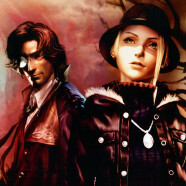





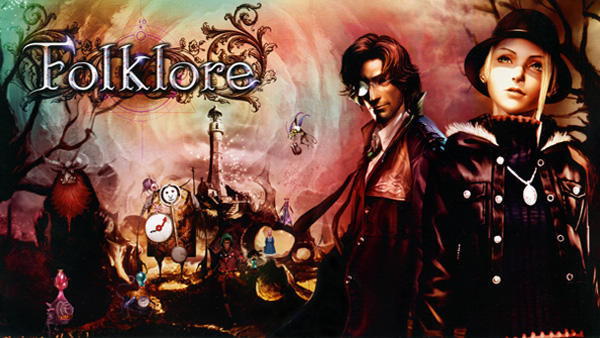
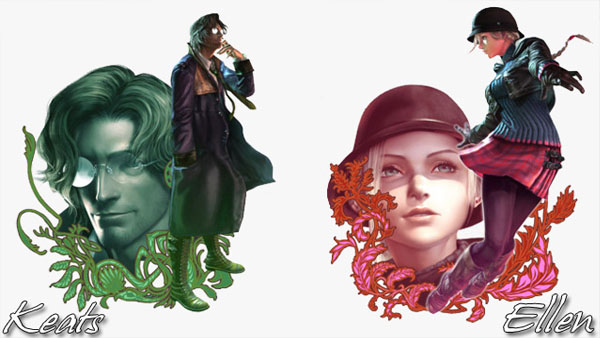

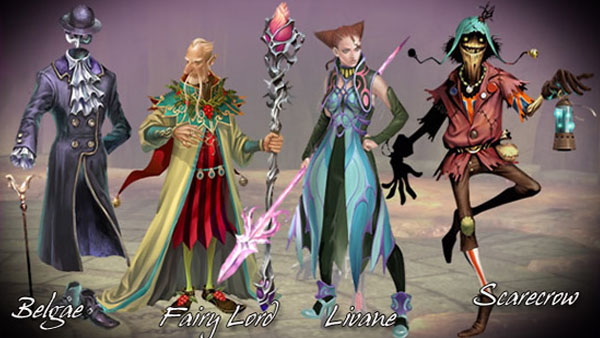
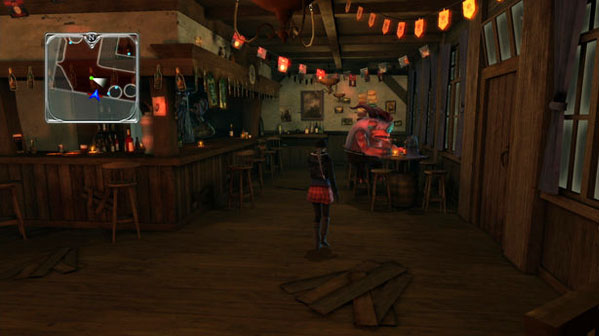
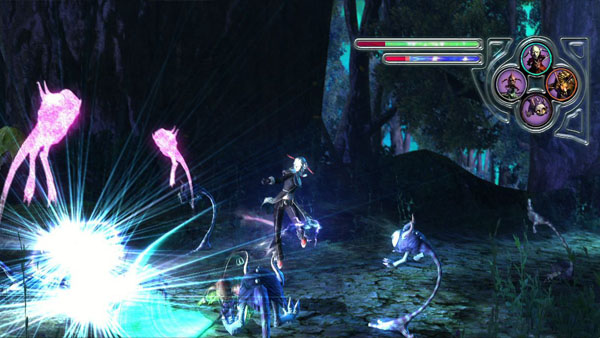
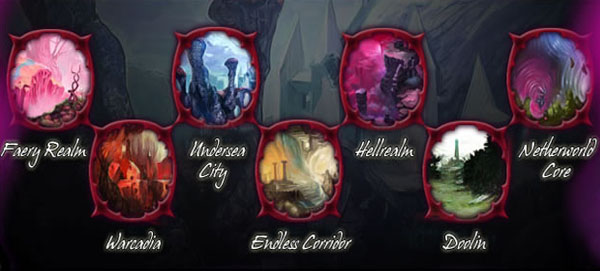
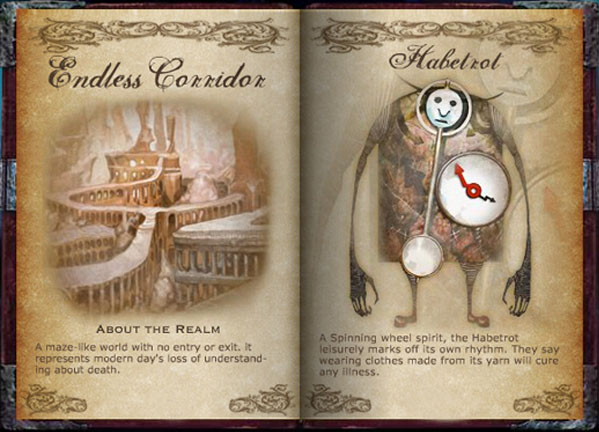
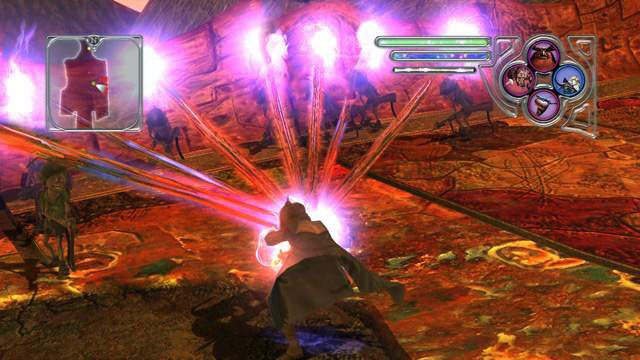
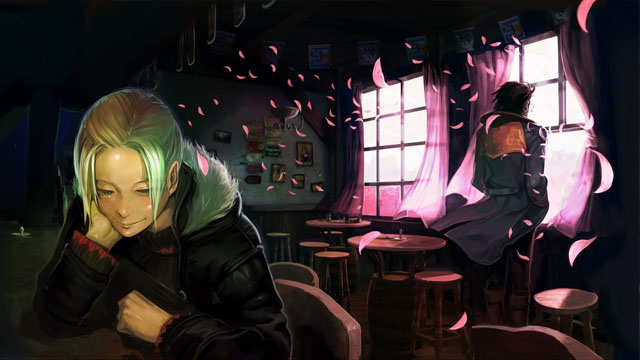
Sempre a personagem principal chama Ellen. Por que será???? hehehe
It seems great to me D=
At least it looks easy to play.
What I found more atractive are these dark misterious sceneries and the story looks pretty good.
Ellen looks like a sim, from the sims rere